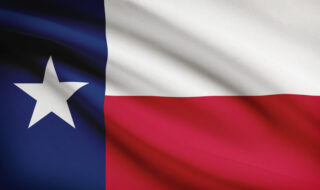February 7, 2024 Last Edit: July 18, 2024
On February 1, the Walz Administration released plans for a government-run health insurance plan, commonly known as a “public option.”
On February 1, the Walz Administration released plans for a government-run health insurance plan, commonly known as a “public option.”
Last year, lawmakers tasked the Minnesota Department of Commerce with devising strategies to implement a public option in Minnesota. The department’s report analyzes eight different public option plans that break down into two main buckets:
- “MinnesotaCare Buy-In” managed by the Minnesota Department of Human Services. In this scenario, lawmakers would open MinnesotaCare – a program that offers heavily subsidized health insurance to the working poor – to people with higher incomes.
- Government-designed “Standard Plan” that must be offered by all health insurers who sell insurance on the government-run MNsure health insurance exchange. This is similar to public options models in Washington and Colorado.
Since the implementation of the Affordable Care Act (ACA, or Obamacare) and MNsure in 2013, Minnesota has struggled to maintain affordability and stability in the Individual Market. This market is where people who don’t have coverage through work or the government buy health insurance and it serves about 200,000 people, including many small business owners.
Because of instability wrought by ACA regulations, individual market insurance premiums have doubled – or worse – in the past decade. Deductibles are among the highest in the nation.
Since 2018, the individual market has been stabilized by a “reinsurance” program where the state and federal government pay a portion of very high-cost medical bills in order to soften the blow to other policy holders. With NFIB’s support, reinsurance was authorized and renewed on a bipartisan basis.
Reinsurance has succeeded in bringing more people back to the pool and reducing rates by 25% over what they otherwise would be. It provides relief to everyone in the individual market.
Last year, DFLers and Gov. Walz set reinsurance to end after 2025 and planned to launch a public option in 2027. The goal of a government-run public option is to create a comprehensive plan with a high “actuarial value.”
Most health insurance plans pay about 70% to 80% of covered medical costs; the DFL’s public option would cover about 95% of costs.
NFIB strongly opposes a public option for the following reasons:
More Expensive, Less Effective. A public option is a more complicated, more expensive plan than reinsurance. At minimum it would require twice the public money to serve half the number of people as reinsurance.
The chart below shows the comparative public cost of Individual Market with Reinsurance versus a Public Option:
Small Business (and Everyone Else) Pays More. In order to offer a platinum-plated benefit set at premiums that are remotely attractive, a public option relies on both massive public subsidies and very low payments for healthcare provider services.
Hospitals and clinics will compensate for this by making remaining private market health plans pay more for care.
Public Option Jeopardizes Access to Care. Around the state, rural healthcare providers are already struggling financially. This has led to declines in available services, long drive times for things like pregnancy care, and consolidation in the rural healthcare system.
Putting more people on low government payment plans could sink many hospitals and clinics, putting access to care even further away for people in Greater Minnesota.
A “Successful” Public Option Collapses the Private Market. If the public option succeeds in attracting enough enrollees through heavy government subsidies and low provider payment rates, it will hollow out other private insurance markets such as the Individual Market and Small Group Market.
With fewer and fewer enrollees in those private markets, the markets will inevitably collapse. The public option subsumes those markets and becomes, in effect, single payer.
A public option was once highly controversial among centrists on both sides of the political aisle. Concerns about the impacts above led to its exclusion from the ACA in 2010 in order to win votes from moderate Democrats. It is now widely embraced by Democrats at the federal level and Minnesota.
You can read more about NFIB’s opposition in an editorial published last year in the Duluth News Tribune: Local View: Government-run health insurance is false hope – Duluth News Tribune.
NFIB is a member-driven organization advocating on behalf of small and independent businesses nationwide.
Related Articles














